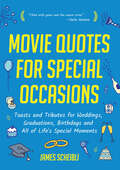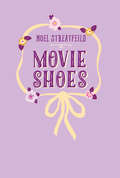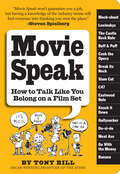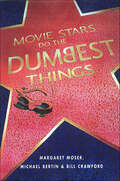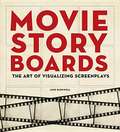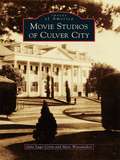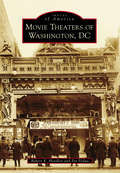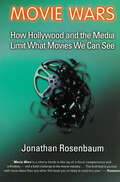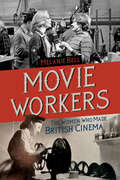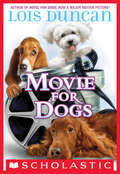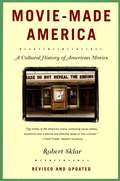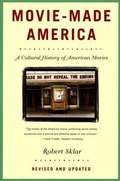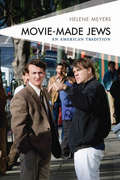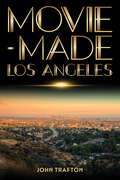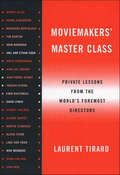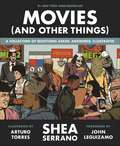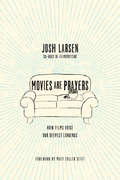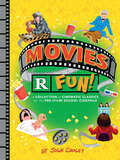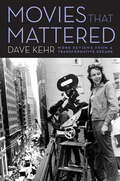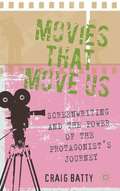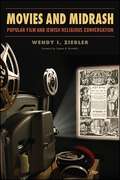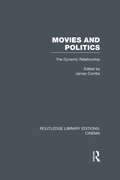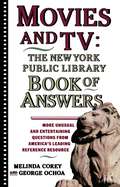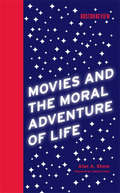- Table View
- List View
Movie Quotes for Special Occasions: Toasts and Tributes for Weddings, Graduations, Birthdays and All of Life's Special Moments
by James ScheibliGreat Movie Quotes for Life’s Special MomentsIf you enjoyed 1001 Movies You Must See Before You Die, What If? or Movie Quotes for All Occasions, you'll love Movie Quotes for Special Occasions.Move Quotes Are Classic: Whether it’s Casablanca, Cabaret, Clueless, or The Cable Guy, you probably have favorite flicks you often quote. And it’s true, “We’ll always have Paris.” From A Man Called Horse to Zoolander and everything in between, our beloved films have excellent writing and memorable dialogue; we have talented Hollywood screenwriters to thank for the brilliant one-liners we love. Movie quotes have become an integral part of our culture and expression.Special Quotes for Special Occasions: The movie quotes that often show up on “best of” lists rarely lend themselves to important moments in life. On how many special occasions can you say “May the Force be with you”? Open up most movie quote lists or books and you’re likely to see “Play it again, Sam,” or “There’s no place like home.” Yet there are so many lines just under the radar that are the stuff of pure poetry and sheer genius. That’s where cinephile and true movie buff James Scheibli comes in! In Movie Quotes for Special Occasions, he has scoured the movies of the world to track down the most fitting and fabulous movie quotes for every special occasion.Fitting for Any Speech, Toast, or Card: From graduations to birthdays to wedding toasts to golden anniversaries, film scholar James Scheibli provides cinematic quotes that are moving, memorable, inspirational, and deeply meaningful. These quips, quotes, and scene-stealing lines do more than just remind us of the movies they came from. They transcend their stories and enrich your life. Whether from blockbuster megahits or forgotten indies, Movie Quotes for Special Occasions has the right quote for the right occasion.Movie Quotes for Special Occasions is a great movie lover gift, anniversary gift, or coffee table book for your friends and family to enjoy.
Movie Shoes (The Shoe Books)
by Noel StreatfeildFor the first time ever in the United States, the "Shoes" books are available as ebooks! Go behind the scenes of a movie in this beloved classic!Life is tough for the Winter family in London, with little money and Dad out of work. Luckily, Aunt Cora comes to the rescue with an invitation to live in California. From that moment on, talented Rachel and Tim dream of stardom in America. The family couldn't be more surprised when a movie producer picks plain, peevish Jane for the lead role of Mary in The Secret Garden. No one's ever noticed Jane before. Could this be the chance of a lifetime?Noel Streatfeild's "Shoes" books are some of the most popular of the thirty-eight books she wrote for children.
Movie Speak: How To Talk Like You Belong On A Movie Set
by Tony Bill<P>When is "groucho" not a comedian? <P> A "seagull" not a bird? <P><P>A "banana" not a fruit, and a "taco cart" not a food stand? <P>What's the "Castle rock rule" and when should you call for a "buff & puff"? <P>And why expect trouble when the A.D. (assistant director) knowingly mumbles "Gone With the Wind in the morning, Dukes of Hazzard after lunch"? <P>An oral tradition gathered and passed down for more than a hundred years, the language of moviemaking, like other secret lexicons, is the only accepted way of communicating on a set—and is all but unknown to the outside world. Technical, odd, colorful, mysterious, the working language of movies sheds light not only on the hugely complex process of making a film, but on the invisible hierarchies of a set, the unspoken etiquette between cast and crew, and the evolution of a process that's endlessly fascinating. <P><P> Movie Speak is a book about language, but through language also a book about what it’s really like to be a director or a producer or an actor or a crew member. An Oscarwinning producer (The Sting), actor (who worked with Spielberg, Coppola, and Sydney Pollock), and director (Five Corners, Flyboys, My Bodyguard, and more), Tony Bill has been on sets for more than 30 years and brings a writer's love of language to this collection of hundreds of film terms. A futz. A cowboy. A Brodkin and a double Brodkin (a.k.a. screamer). Streaks ’n tips, a Lewinsky, Green Acres, rhubarb, a peanut, a Gary Coleman, snot tape, twin buttes, manmaker (and why you can yell for one if needed for a grip, but must whisper if it's for Tom Cruise)—these are the tricks of the trade.
Movie Stars Do the Dumbest Things
by Bill Crawford Michael Bertin Margaret MoserJohnny Depp. Marilyn Monroe. Marlon Brando. Leonardo DiCaprio. Woody Allen. Shanron Stone. What do all of these actors have in common? They're outrageous, receive huge salaries, have enormous egos, and have way too much spare time. Their out-of-control lifestyles prove that, as one Hollywood observer noted, "Hollywood is a trip through a sewer in a glass-bottomed boat." You'll learn which director was furious when he was misquoted as saying, "Actors are cattle." He claimed he had really said, "Actors should be treated as cattle." You'll discover that Bruce Wilis ordered the final scenes in Striking Distance to be re-shot at a cost of over $750,000 because the original shots exposed his toupee.You'll find that Melanie Griffith explained her ignorance of the Nazi holocaust by saying, "I don't know why I didn't know. Maybe I missed school that day...I'm not stupid." Whether you're a fan of Hugh Grant, Dennis Hopper, or Whoopi Goldberg, you'll learn about all of the embarrassing moments in your favorite star's life. From actors like Ben Affleck and Cameron Diaz to screen legends like Frank Sinatra and Judy Garland, Movie Stars Do the Dumbest Things is proof that actors are more childish and impulsive than you've ever imagined.
Movie Storyboards
by Fionnuala HalliganThis comprehensive and enlightening collection--the first of its kind--features storyboard art from the last 100 years, covering more than 50 classic, cult, and popular films. Much of the artwork included here has never been published, including early drawings from such great artists as William Cameron Menzies (Gone With the Wind), Mentor Huebner (North by Northwest, Ben-Hur), Salvador Dali (Spellbound), and Saul Bass (Psycho, Spartacus), plus work from contemporary artists such as Jane Clark (the Harry Potter series). Augmented throughout with insights from the designers, directors, and artists who share some of their secrets and tips from behind the scenes, Movie Storyboards is an essential collection for any film student or true fan.
Movie Studios of Culver City
by Marc Wanamaker Julie Lugo CerraAfter watching pioneer filmmaker Thomas Ince film one of his famous Westerns on Ballona Creek, city founder Harry Culver saw the economic base for his city. Culver announced plans for the city in 1913 and attracted three major movie studios to Culver City, along with smaller production companies. "The Heart of Screenland" is fittingly etched across the Culver City seal. These vintage images are a tour through the storied past of this company town on the legendary movie lots bearing the names of Thomas Ince, Hal Roach, Goldwyn, Metro-Goldwyn-Mayer, Lorimar, MGM-UA, Columbia, Sony Pictures, DeMille, RKO-Pathe, Selznick, Desilu, Culver City Studios, Laird International, the Culver Studios, and such nearly forgotten mini-factories as the Willat Studios. On these premises, Gone With the Wind, The Wizard of Oz, Citizen Kane, E.T: The Extra-Terrestrial, and other classics were filmed, along with tens of thousands of television shows and commercials featuring Elvis Presley, the Beatles, Michael Jackson, and many others.
Movie Trivia Quiz Book
by The Editors at Ventura BooksHundreds of questions (and answers) about movies made before 1981.
Movie Wars: How Hollywood and the Media Limit What Movies We Can See
by Jonathan RosenbaumIs the cinema, as writers from David Denby to Susan Sontag have claimed, really dead? Contrary to what we have been led to believe, films are better than ever--we just can't see the good ones. Movie Wars cogently explains how movies are packaged, distributed, and promoted, and how, at every stage of the process, the potential moviegoer is treated with contempt. Using examples ranging from the New York Times's coverage of the Cannes film festival to the anticommercial practices of Orson Welles, Movie Wars details the workings of the powerful forces that are in the process of ruining our precious cinematic culture and heritage, and the counterforces that have begun to fight back.
Movie Workers: The Women Who Made British Cinema (Women & Film History International #1)
by Melanie BellRolling the credits on six decades of women in film After the advent of sound, women in the British film industry formed an essential corps of below-the-line workers, laboring in positions from animation artist to negative cutter to costume designer. Melanie Bell maps the work of these women decade-by-decade, examining their far-ranging economic and creative contributions against the backdrop of the discrimination that constrained their careers. Her use of oral histories and trade union records presents a vivid counter-narrative to film history, one that focuses not only on women in a male-dominated business, but on the innumerable types of physical and emotional labor required to make a motion picture. Bell's feminist analysis looks at women's jobs in film at important historical junctures while situating the work in the context of changing expectations around women and gender roles. Illuminating and astute, Movie Workers is a first-of-its-kind examination of the unsung women whose invisible work brought British filmmaking to the screen.
Movie for Dogs: Movie Novelisation (Playaway Children Ser.)
by Lois DuncanAndi and her canine friends are back for their biggest adventure yet—Hollywood! Third in the series starting with Hotel for Dogs (made into the hit movie).When Andi’s brother Bruce wants to enter a dog-themed film-making contest, Andi jumps at the opportunity to become a screenwriter. But neither of them expects what happens next—a producer wants their movie! Can Andi and Bruce’s show (and dogs) go Hollywood?“A delightful reading experience.” —VOYA Magazine
Movie-Made America: A Cultural History of American Movies
by Robert SklarHailed as the definitive work upon its original publication in 1975 and now extensively revised and updated by the author, this vastly absorbing and richly illustrated book examines film as an art form, technological innovation, big business, and shaper of American values. 80 black-and-white photos.
Movie-Made America: A Cultural History of American Movies (Revised and Updated)
by Robert SklarThis extensively revised, updated, vastly absorbing and richly illustrated book examines film as an art form, technological innovation, big business, and shaper of American values.
Movie-Made Jews: An American Tradition
by Helene MeyersMovie-Made Jews focuses on a rich, usable American Jewish cinematic tradition. This tradition includes fiction and documentary films that make Jews through antisemitism, Holocaust indirection, and discontent with assimilation. It prominently features the unapologetic assertion of Jewishness, queerness, and alliances across race and religion. Author Helene Meyers shows that as we go to our local theater, attend a Jewish film festival, play a DVD, watch streaming videos, Jewishness becomes part of the multicultural mosaic rather than collapsing into a generic whiteness or being represented as a life apart. This engagingly-written book demonstrates that a Jewish movie is neither just a movie nor for Jews only. With incisive analysis, Movie-Made Jews challenges the assumption that American Jewish cinema is a cinema of impoverishment and assimilation. While it’s a truism that Jews make movies, this book brings into focus the diverse ways movies make Jews.
Movie-Made Los Angeles (Contemporary Approaches to Film and Media Studies)
by John TraftonExplores the proto-cinematic visual culture of Los Angeles that set the scene for modern Hollywood. Los Angeles was a cinematic city long before the rise of Hollywood. By the dawn of the twentieth century, photography, painting, and tourist promotion in Southern California provided early filmmakers with a template for building a myth-making business and envisioning ideal moviegoers. These art forms positioned California as a land of transformative experiences and catapulted the dusty backwater town of Los Angeles to the largest city on the west coast by 1915. Photography aided the Southern Pacific Railroad Company in opening the region to the rest of nation. Painters gave traditions that were fading in Europe a new lease on life in the California sun, with signature colors and techniques that would be adopted by L.A. real estate companies, agribusiness, and health retreats. Tourism infused the iconography and signature styles of art with cultural mythology of the state’s colonial past, offering proto-cinematic experiences to those who ventured west. Author John Trafton explores how Hollywood, an industry based on world-building, was the product of these art forms in the land of sunshine. A more complete story of the American film industry’s ascendency in Los Angeles emerges when one considers how the City of Angels cultivated its self-image through pre-cinema narrative art.
Moviemakers' Master Class: Private Lessons from the World's Foremost Directors
by Laurent TirardInterviews with Scorsese, Lynch, Godard, Woo, the Coen brothers, and more of the world’s greatest directors on how they make films—and why.Every great filmmaker has a secret method to his moviemaking—but each of them is different. In Moviemaker Master Class, Laurent Tirard talks to twenty of our era’s most important filmmakers to get to the core of each director’s approach to film, exploring the filmmaker’s vision as well as his technique, while allowing each to speak in his own voice.Martin Scorsese likes setting up each shot very precisely ahead of time—so that he has the opportunity to change it all if he sees the need. Lars Von Trier, on the other hand, refuses to think about a shot until the actual moment of filming. And Bernardo Bertolucci tries to dream his shots the night before; if that doesn’t work, he roams the set alone with a viewfinder, imagining the scene before the actors and crew join him. In these interviews with David Cronenberg, Pedro Almodovar, Tim Burton, Wim Wenders, and more—which originally appeared in the French film magazine Studio and are being published here in English for the first time—enhanced by exceptional photographs of the directors at work, Laurent Tirard has succeeded in finding out what makes each filmmaker, and his films, so extraordinary, shedding light on both the process and the people behind great moviemaking.“Tirard’s healthy balance of nuts-and-bolts information and conceptual musings should be of interest to lay readers as well as would-be auteurs.” —Publishers Weekly“[An] excellent resource.” —Library Journal
Movies (And Other Things)
by Shea Serrano#1 New York Times bestselling author Shea Serrano is back, and his new book, Movies (And Other Things), combines the fury of a John Wick shootout, the sly brilliance of Regina George holding court at a cafeteria table, and the sheer power of a Denzel monologue, all into one. p.p1 {margin: 0.0px 0.0px 0.0px 0.0px; line-height: 18.0px; font: 14.7px Tahoma; color: #000000; -webkit-text-stroke: #000000; background-color: #ffffff} p.p2 {margin: 0.0px 0.0px 0.0px 0.0px; line-height: 18.0px; font: 14.7px Tahoma; color: #000000; -webkit-text-stroke: #000000; min-height: 18.0px} p.p3 {margin: 0.0px 0.0px 0.0px 0.0px; line-height: 17.0px; font: 14.7px Arial; color: #000000; -webkit-text-stroke: #000000} span.s1 {font-kerning: none} span.s2 {font-kerning: none; background-color: #ffffff} Movies (And Other Things) is a book about, quite frankly, movies (and other things). One of the chapters, for example, answers which race Kevin Costner was able to white savior the best, because did you know that he white saviors Mexicans in McFarland, USA, and white saviors Native Americans in Dances with Wolves, and white saviors Black people in Black or White, and white saviors the Cleveland Browns in Draft Day? Another of the chapters, for a second example, answers what other high school movie characters would be in Regina George's circle of friends if we opened up the Mean Girls universe to include other movies (Johnny Lawrence is temporarily in, Claire from The Breakfast Club is in, Ferris Bueller is out, Isis from Bring It On is out...). Another of the chapters, for a third example, creates a special version of the Academy Awards specifically for rom-coms, the most underrated movie genre of all. And another of the chapters, for a final example, is actually a triple chapter that serves as an NBA-style draft of the very best and most memorable moments in gangster movies. Many, many things happen in Movies (And Other Things), some of which funny, others of which are sad, a few of which are insightful, and all of which are handled with the type of care and dedication to the smallest details and pockets of pop culture that only a book by Shea Serrano can provide.
Movies Are Prayers: How Films Voice Our Deepest Longings
by Josh Larsen"Movies are our way of telling God what we think about this world and our place in it. . . . Movies can be many things: escapist experiences, historical artifacts, business ventures, and artistic expressions, to name a few. I'd like to suggest that they can also be prayers."Filmspotting
Movies R Fun!: A Collection of Cinematic Classics for the Pre-(Film) School Cinephile
by Josh CooleyNo one under seventeen should be admitted without a parent or guardian to these “fun-filled” illustrations of twisted movie moments from a beloved animator (Parade).Let’s face it, reading sucks . . . but movies are fun! In this grown-up parody of a children’s picture book, Pixar writer and artist Josh Cooley presents the most hilariously inappropriate—that is, the best—scenes from contemporary classic films in an illustrated, for-early-readers style. Terrifying, sexy, and awesome scenes from such favorite films as Alien, Rosemary’s Baby, Fargo, Basic Instinct, Seven, The Silence of the Lambs, Apocalypse Now, The Shining, and many more are playfully illustrated and captioned to make reading fun and exciting for kids who never grew up. A sly celebration of the things fans love most about these legendary films (and movies in general), this is one book that probably should not be read at bedtime.
Movies That Mattered: More Reviews from a Transformative Decade
by Dave KehrDave Kehr’s writing about film has garnered high praise from both readers and fellow critics. Among his admirers are some of his most influential contemporaries. Roger Ebert called Kehr “one of the most gifted film critics in America.” James Naremore thought he was “one of the best writers on film the country as a whole has ever produced.” But aside from remarkably detailed but brief capsule reviews and top-ten lists, you won’t find much of Kehr’s work on the Internet, and many of the longer and more nuanced essays for which he is best known have not yet been published in book form. With When Movies Mattered, readers welcomed the first collection of Kehr’s criticism, written during his time at the Chicago Reader. Movies That Mattered is its sequel, with fifty more reviews and essays drawn from the archives of both the Chicago Reader and Chicago magazine from 1974 to 1986. As with When Movies Mattered, the majority of the reviews offer in-depth analyses of individual films that are among Kehr’s favorites, from a thoughtful discussion of the sobering Holocaust documentary Shoah to an irresistible celebration of the raucous comedy Used Cars. But fans of Kehr’s work will be just as taken by his dissections of critically acclaimed films he found disappointing, including The Shining, Apocalypse Now, and Raiders of the Lost Ark. Whether you’re a long-time reader or just discovering Dave Kehr, the insights in Movies That Mattered will enhance your appreciation of the movies you already love—and may even make you think twice about one or two you hated.
Movies That Move Us
by Craig BattyFrom a screenwriting perspective, Batty explores the idea that the protagonist's journey is comprised of two individual yet interwoven threads: the physical journey and the emotional journey. His analysis includes detailed case studies of the films Muriel's Wedding , Little Voice , Cars , Forgetting Sarah Marshall , Sunshine Cleaning and Up.
Movies and Midrash: Popular Film and Jewish Religious Conversation
by Wendy I. ZierlerFinalist for the 2017 National Jewish Book Award in Modern Jewish Thought and Experience presented by the Jewish Book CouncilMovies and Midrash uses cinema as a springboard to discuss central Jewish texts and matters of belief. A number of books have drawn on films to explicate Christian theology and belief, but Wendy I. Zierler is the first to do so from a Jewish perspective, exploring what Jewish tradition, text, and theology have to say about the lessons and themes arising from influential and compelling films. The book uses the method of "inverted midrash": while classical rabbinical midrash begins with exegesis of a verse and then introduces a mashal (parable) as a means of further explication, Zierler turns that process around, beginning with the culturally familiar cinematic parable and then analyzing related Jewish texts. Each chapter connects a secular film to a different central theme in classical Jewish sources or modern Jewish thought. Films covered include The Truman Show (truth), Memento (memory), Crimes and Misdemeanors (sin), Magnolia (confession and redemption), The Descendants (birthright), Forrest Gump (cleverness and simplicity), and The Hunger Games (creation of humanity in God's image), among others.
Movies and Politics: The Dynamic Relationship (Routledge Library Editions: Cinema)
by James CombsCollecting together some of the best thinking about the relationship between movies and politics, this book, originally published in 1993, encourages an awareness of the political dimension of film, both for film scholars and those entering the film industry. Eight essays are grouped into four parts addressing political ideology and movie narrative, political myth in the movies, political history and movie culture, and political communication and the movies. An introductory essay, as well as prefatory remarks to each of the four parts, brings additional insight and perspective and puts the essays into context.
Movies and TV: The New York Public Library Book of Answers
by George Ochoa Melinda Corey Diane CoreyIf you're a movie or television fan - how many of these questions can you answer? What was the last picture show in The Last Picture Show? Where was the stagecoach headed in Stagecoach? What was the name of the dinosaur bone in Bringing Up Baby? What did Gomer Pyle do before he entered the Marines? Who played Gentle Ben? Like The Book of Answers, this book answers hundreds of questions in one of the New York Public LIbrary Telephone Reference Service's most popular areas - film and television. It covers the biggest stars, breakthrough productions, famous on-and-off-screen incidents, and film and TV history and trivia. Movies and TV: The New York Public Library Book of Answers is both informative and entertaining - a treasure trove of fascinating movie and TV facts, a perfect companion to The Book of Answers, and a real treat for movie and TV fans.
Movies and the Moral Adventure of Life (Boston Review)
by Alan A. StoneEssays on small art films and big-budget blockbusters, including Antonia's Line, American Beauty, Schindler's List, and The Passion of the Christ, that view films as life lessons, enlarging our sense of human possibilities. For Alan Stone, a one-time Freudian analyst and former president of the American Psychiatric Society, movies are the great modern, democratic medium for exploring our individual and collective lives. They provide occasions for reflecting on what he calls “the moral adventure of life”: the choices people make—beyond the limits of their character and circumstances—in response to life's challenges. The quality of these choices is, for him, the measure of a life well lived. In this collection of his film essays, Stone reads films as life texts. He is engaged more by their ideas than their visual presentation, more by their power to move us than by their commercial success. Stone writes about both art films and big-budget Hollywood blockbusters. And he commands an extraordinary range of historical, literary, cultural, and scientific reference that reflects his impressive personal history: professor of law and medicine, football player at Harvard in the late 1940s, director of medical training at McLean Hospital, and advisor to Attorney General Janet Reno on behavioral science. In the end, Stone's enthusiasms run particularly to films that embrace the sheer complexity of life, and in doing so enlarge our sense of human possibilities: in Antonia's Line, he sees an emotionally vivid picture of a world beyond patriarchy; in Thirteen Conversations about One Thing, the power of sheer contingency in human life; and in American Beauty, how beauty in ordinary experience draws us outside ourselves, and how beauty and justice are distinct goods, with no intrinsic connection. Other films discussed in these essays (written between 1993 and 2006 for Boston Review) include Un Coeur en Hiver, Schindler's List, Pulp Fiction, Thirteen Days, the 1997 version of Lolita, The Battle of Algiers, The Passion of the Christ, Persuasion, and Water.
